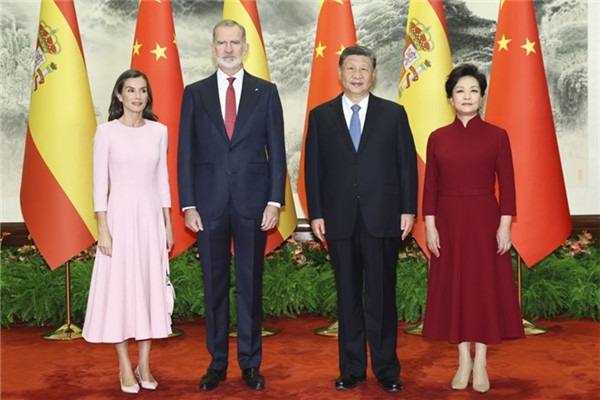China builds momentum in rare disease treatment and care

HAIKOU -- At the entrance of the 2025 International Conference on Rare Diseases, visitors are greeted by a poignant painting: a young girl lies in a hospital bed as a nurse approaches with a cart filled with medication. Outside the window, birds soar gracefully against a backdrop of blue sky that stretches endlessly over the open sea.
The artwork is by Liu Xinruo, a Chinese girl with an inherited disorder of bone growth. A small plaque beside her painting notes: "Pseudoachondroplasia. Orthopedic surgeries at age 8 and 15."
Liu's painting offers a quiet but powerful message -- even amid pain and uncertainty, there is strength and resilience. Her story mirrors the experiences of more than 300 million people worldwide living with rare diseases.
From Friday to Sunday, experts from across the globe, including clinicians, researchers, pharmaceutical representatives, policymakers, and patient advocates, convened in Haikou, capital of China's southern island province of Hainan, to discuss the future of rare disease diagnosis and care.
Globally, more than 7,000 rare diseases have been identified, yet only about 5 percent have approved treatments. In China alone, over 20 million people are affected by rare conditions.
However, progress is now clearly taking shape. As China works to fulfill its pledge of ensuring health for its 1.4 billion people, patients like Liu are starting to experience tangible improvements.
At the conference, Ma Xudong, an official with China's National Health Commission, highlighted a multifaceted strategy that is making significant strides in steadily advancing care for patients with rare diseases. Key measures include the creation of a national rare disease list, expanded insurance coverage, improved clinical guidelines, and accelerated drug development.
China has established a collaborative hospital network covering all provincial-level regions. The network, now comprising 419 hospitals, facilitates case referrals, telemedicine, and data sharing -- helping to reduce the average diagnostic time for rare diseases from four years to less than four weeks, while slashing costs by 90 percent.
Meanwhile, China's official list of recognized rare diseases has expanded to 207 conditions. More than 90 rare disease drugs have been included in the national medical insurance system, significantly lowering the financial burden on patients.
Technological innovation is playing a critical role in addressing the complex challenges of rare disease care. The China Alliance for Rare Diseases (CARD) has developed a digital health platform focused on intelligent applications for diagnosis, patient management, clinical research, education, and drug development.
Even more groundbreaking is the clinical launch of PUMCH-GENESIS, a large language AI model developed by Peking Union Medical College Hospital (PUMCH) and the Chinese Academy of Sciences. Leveraging vast datasets of rare disease knowledge and genetic information, the model helps doctors make faster and more accurate diagnoses.
"Technology's true value lies in making the impossible possible," said Zhang Shuyang, president of PUMCH.
Policy innovation has also opened new frontiers. In Hainan's Boao Lecheng International Medical Tourism Pilot Zone, a special regulatory framework has allowed the introduction of 45 internationally approved rare disease drugs not yet authorized for use elsewhere in China.
The National Natural Science Foundation of China has launched a funding program for rare disease research, and the Ministry of Science and Technology has approved the creation of a national key laboratory for complex and rare diseases.
Beyond medicine and policy, a growing network of professional and grassroots support is helping rare disease patients feel less isolated. Over the past decade, organizations such as the Beijing Illness Challenge Foundation, the CARD, and the Chinese Society of Rare Diseases of the Chinese Medical Association have united experts, patients, and decision-makers in shared action.
In a video address to the conference, Martin Taylor, the World Health Organization's Representative to China, praised the country's inclusive process for developing its national rare disease list, which incorporated input from patient groups. He called for global cooperation to build sustainable models of care that address not only physical treatment but also the lifelong mental and emotional needs of patients.
Experts from the International Rare Diseases Research Consortium echoed this view, stressing the need for countries to share resources and ensure that scientific progress outpaces the diseases themselves.
"Supporting people with rare diseases is not a one-off effort," said Li Linkang, executive director of CARD. "It's a lifelong commitment."
- Shanghai's Jinshan district reports economic growth
- Building an effective global communication discussed at Hunan forum
- Cleaning staff transform fallen ginkgo leaves into campus art sensation
- Chinese scientists weave tiny polymer capable of towing car
- Hebei to expand transportation projects during 15th Five-Year Plan period (2026-30)
- Nankai University scholar publishes long-lost Latin translation of Tao Te Ching





































